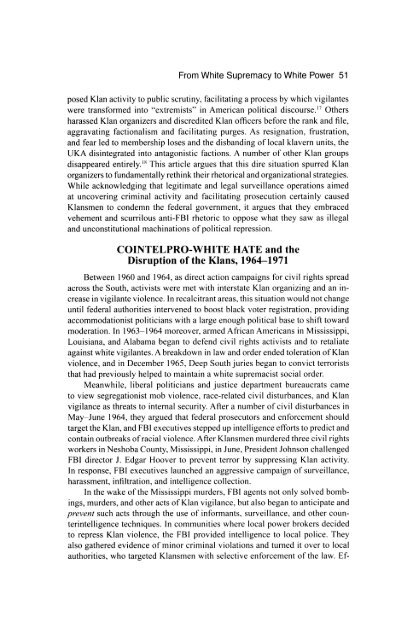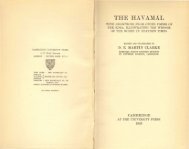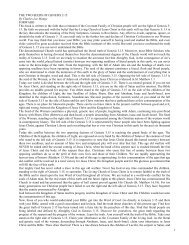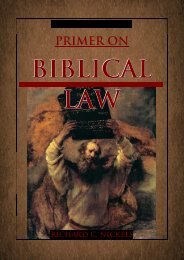From White Supremacy to White Power - Great White Desert
From White Supremacy to White Power - Great White Desert
From White Supremacy to White Power - Great White Desert
You also want an ePaper? Increase the reach of your titles
YUMPU automatically turns print PDFs into web optimized ePapers that Google loves.
<strong>From</strong> <strong>White</strong> <strong>Supremacy</strong> <strong>to</strong> <strong>White</strong> <strong>Power</strong> 51<br />
posed Klan activity <strong>to</strong> public scrutiny, facilitating a process by which vigilantes<br />
were transformed in<strong>to</strong> "extremists" in American political discourse.17 Others<br />
harassed Klan organizers and discredited Klan officers before the rank and file,<br />
aggravating factionalism and facilitating purges. As resignation, frustration,<br />
and fear led <strong>to</strong> membership loses and the disbanding of local klavern units, the<br />
UKA disintegrated in<strong>to</strong> antagonistic factions. A number of other Klan groups<br />
disappeared entirely.18 This article argues that this dire situation spurred Klan<br />
organizers <strong>to</strong> fundamentally rethink their rhe<strong>to</strong>rical and organizational strategies.<br />
While acknowledging that legitimate and legal surveillance operations aimed<br />
at uncovering criminal activity and facilitating prosecution certainly caused<br />
Klansmen <strong>to</strong> condemn the federal government, it argues that they embraced<br />
vehement and scurrilous anti-FBI rhe<strong>to</strong>ric <strong>to</strong> oppose what they saw as illegal<br />
and unconstitutional machinations of political repression.<br />
COINTELPRO-WHITE HATE and the<br />
Disruption of the Klans, 1964-1971<br />
Between 1960 and 1964, as direct action campaigns for civil rights spread<br />
across the South, activists were met with interstate Klan organizing and an increase<br />
in vigilante violence. In recalcitrant areas, this situation would not change<br />
until federal authorities intervened <strong>to</strong> boost black voter registration, providing<br />
accommodationist politicians with a large enough political base <strong>to</strong> shift <strong>to</strong>ward<br />
moderation. In 1963-1964 moreover, armed African Americans in Mississippi,<br />
Louisiana, and Alabama began <strong>to</strong> defend civil rights activists and <strong>to</strong> retaliate<br />
against white vigilantes. A breakdown in law and order ended <strong>to</strong>leration of Klan<br />
violence, and in December 1965, Deep South juries began <strong>to</strong> convict terrorists<br />
that had previously helped <strong>to</strong> maintain a white supremacist social order.<br />
Meanwhile, liberal politicians and justice department bureaucrats came<br />
<strong>to</strong> view segregationist mob violence, race-related civil disturbances, and Klan<br />
vigilance as threats <strong>to</strong> internal security. After a number of civil disturbances in<br />
May-June 1964, they argued that federal prosecu<strong>to</strong>rs and enforcement should<br />
target the Klan, and FBI executives stepped up intelligence efforts <strong>to</strong> predict and<br />
contain outbreaks of racial violence. After Klansmen murdered three civil rights<br />
workers in Neshoba County, Mississippi, in June, President Johnson challenged<br />
FBI direc<strong>to</strong>r J. Edgar Hoover <strong>to</strong> prevent terror by suppressing Klan activity.<br />
In response, FBI executives launched an aggressive campaign of surveillance,<br />
harassment, infiltration, and intelligence collection.<br />
In the wake of the Mississippi murders, FBI agents not only solved bombings,<br />
murders, and other acts of Klan vigilance, but also began <strong>to</strong> anticipate and<br />
prevent such acts through the use of informants, surveillance, and other counterintelligence<br />
techniques. In communities where local power brokers decided<br />
<strong>to</strong> repress Klan violence, the FBI provided intelligence <strong>to</strong> local police. They<br />
also gathered evidence of minor criminal violations and turned it over <strong>to</strong> local<br />
authorities, who targeted Klansmen with selective enforcement of the law. Ef-









